Emphasis on Type (Type A and Type B); Application (Aesthetic and Therapeutic), End-Users (Specialty & Dermatology Clinics, Hospitals, and Others); and Region/Country
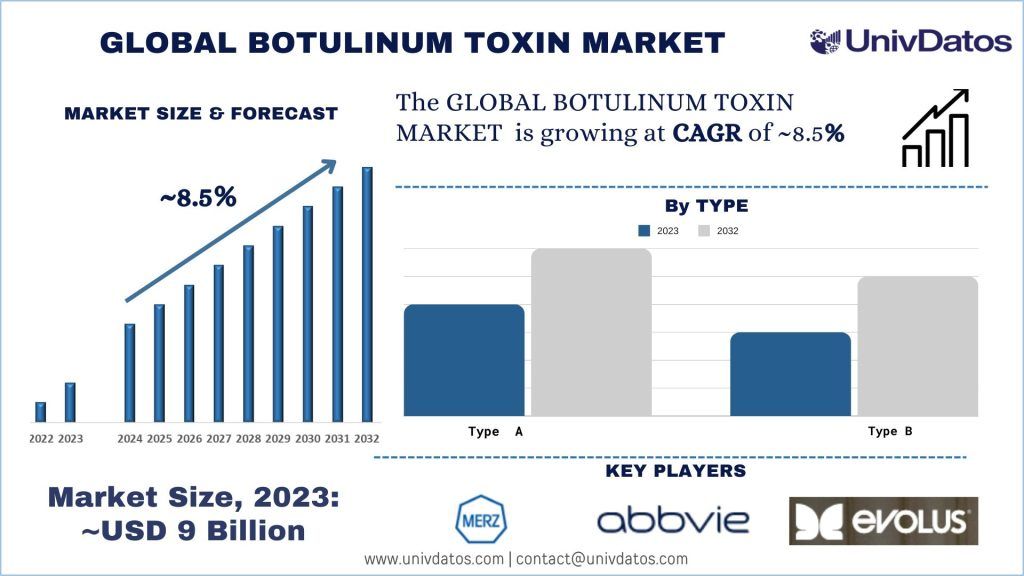 Botulinum Toxin Market Size & Forecast
Botulinum Toxin Market Size & ForecastThe Botulinum Toxin market was valued at approximately USD 9 Billion in 2023 and is expected to grow at a strong CAGR of around 8.5% during the forecast period (2024-2032). Owing to the rising trend of cosmetic makeovers.
Botulinum toxin, a neurotoxic protein produced by the bacterium Clostridium botulinum, has emerged as a powerful tool in both medical and cosmetic fields. Originally infamous for causing botulism, a serious form of food poisoning, botulinum toxin has been harnessed and transformed into a therapeutic agent that offers a wide range of applications. Its ability to block nerve signals to muscles makes it effective in treating various medical conditions and enhancing aesthetic appearances. The Botulinum Toxin market is expanding rapidly, driven by an aging population, increasing aesthetic awareness, and significant technological advancements. A continuous increase in the elderly population is acting as a major driver for the Botulinum Toxin market.
For instance, as per the data of WHO, in 2019, the elderly population (60+ years age) was 1 billion, which is expected to reach 1.4 billion by 2030 and 2.1 billion by 2050.
For instance, as per the American Society of Plastic Surgeons, in 2022, there were over 7.4 million botulinum toxin type A (Botox) procedures performed in the United States alone, reflecting a significant increase from previous years.
This section discusses the key market trends that are influencing the various segments of the Botulinum Toxin Market as identified by our team of research experts.
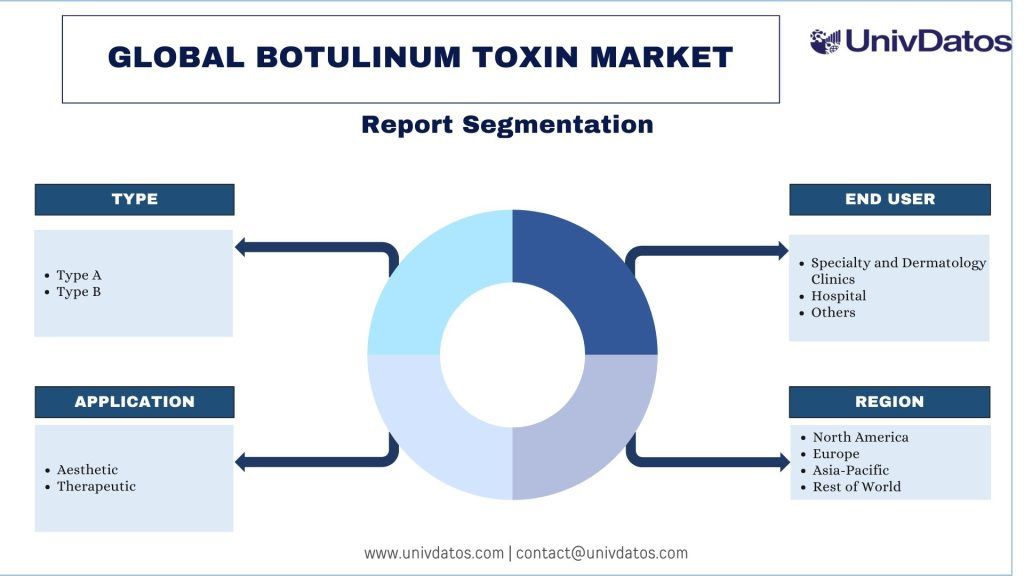
Increasing Demand Among Younger Patients
Younger patients are increasingly opting for botulinum toxin treatments as a preventive measure against the formation of wrinkles. The concept of “prejuvenation,” or preventing signs of aging before they become pronounced, is gaining traction. For Instance, according to the American Academy of Facial Plastic and Reconstructive Surgery (AAFPRS), 72% of facial plastic surgeons reported an increase in patients under 30 seeking cosmetic procedures in 2020.
North America is Expected to Grow with Significant CAGR During Forecast Period
The Botulinum Toxin market in North America has experienced significant growth in recent years, driven by various factors. North America, particularly the U.S., represents one of the largest markets for Botulinum Toxin globally. One of the primary drivers of the Botulinum Toxin market in North America is the aging population. According to the U.S. Census Bureau, the number of Americans aged 65 and older is projected to nearly double by 2060, reaching approximately 95 million. This demographic shift results in a higher demand for cosmetic procedures that can reduce the visible signs of aging, such as Botulinum Toxin.
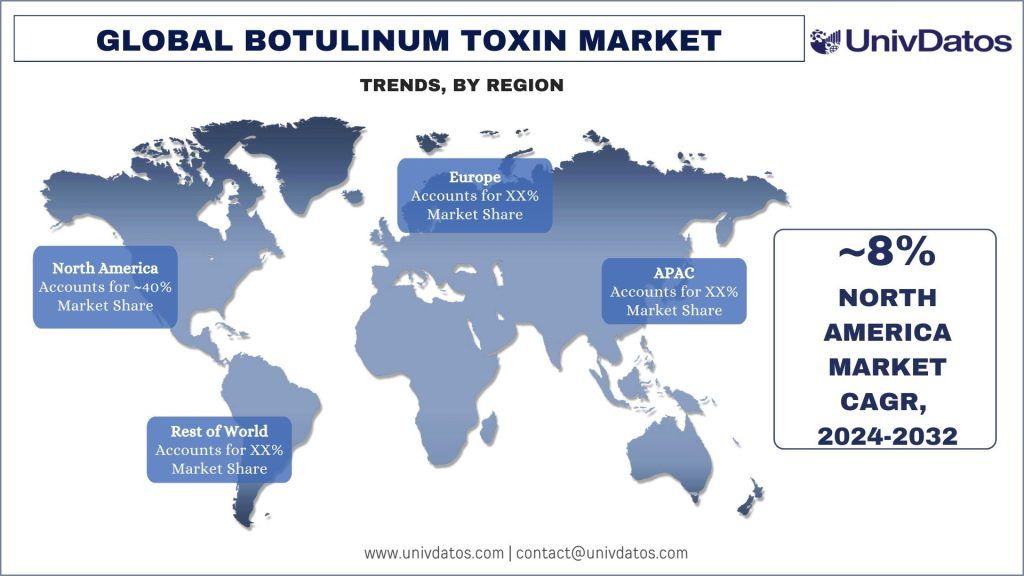
The Botulinum Toxin market is competitive, with the presence of several global and international market players. The key players are adopting different growth strategies to enhance their market presence, such as partnerships, agreements, collaborations, new product launches, geographical expansions, and mergers and acquisitions. Some of the major players operating in the market are Merz Pharma GmbH & Co. KGaA, AbbVie Inc. (Allergan), Evolus Inc., Revance Therapeutics Inc., HUGEL, Ipsen Biopharmaceuticals Inc., USWM LLC, Medytox, Eisai, and Galderma.
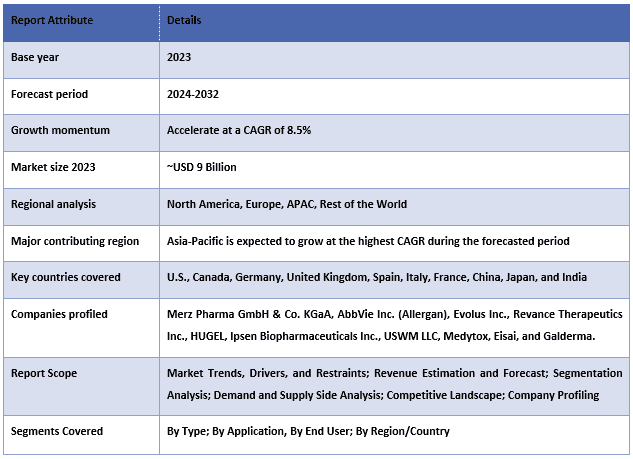
The global Botulinum Toxin market can further be customized as per the requirement or any other market segment. Besides this, UMI understands that you may have your own business needs, hence feel free to connect with us to get a report that completely suits your requirements.
1. Market Introduction
2. Research Methodology Or Assumption
3. Executive Summary
4. Market Dynamics
5. Pricing Analysis
6. Global Botulinum Toxin Market Revenue (usd Bn), 2022-2032f
7. Market Segment By Type
8. Market Segment By Application
9. Market Segment By End-user
10. Market Insights By Region
11. Value Chain Analysis
12. Competitive Landscape
13. Company Profiled
14. Acronyms & Assumption
15. Annexure
Analyzing the historical market, estimating the current market, and forecasting the future market of the global Botulinum Toxin market were the three major steps undertaken to create and analyze the adoption of Botulinum Toxin in major regions globally. Exhaustive secondary research was conducted to collect the historical market numbers and estimate the current market size. Secondly, to validate these insights, numerous findings and assumptions were taken into consideration. Moreover, exhaustive primary interviews were also conducted, with industry experts across the value chain of the global Botulinum Toxin market. Post assumption and validation of market numbers through primary interviews, we employed a top-down/bottom-up approach to forecasting the complete market size. Thereafter, market breakdown and data triangulation methods were adopted to estimate and analyze the market size of segments and sub-segments of the industry pertains to. Detailed methodology is explained below:
Step 1: In-Depth Study of Secondary Sources:
Detail secondary study was conducted to obtain the historical market size of the Botulinum Toxin market through company internal sources such as annual reports & financial statements, performance presentations, press releases, etc., and external sources including journals, news & articles, government publications, competitor publications, sector reports, third-party database, and other credible publications.
Step 2: Market Segmentation:
After obtaining the historical market size of the Botulinum Toxin market, we conducted a detailed secondary analysis to gather historical market insights and share for different segments & sub-segments for major regions. Major segments are included in the report as type, application, end-user and regions. Further country-level analyses were conducted to evaluate the overall adoption of testing models in that region.
Step 3: Factor Analysis:
After acquiring the historical market size of different segments and sub-segments, we conducted a detailed factor analysis to estimate the current market size of the Botulinum Toxin market. Further, we conducted factor analysis using dependent and independent variables such as type, application, end-user and regions of the Botulinum Toxin market. A thorough analysis was conducted for demand and supply-side scenarios considering top partnerships, mergers and acquisitions, business expansion, and product launches in the Botulinum Toxin market sector across the globe.
Current Market Sizing: Based on actionable insights from the above 3 steps, we arrived at the current market size, key players in the global Botulinum Toxin market, and market shares of the segments. All the required percentage shares split, and market breakdowns were determined using the above-mentioned secondary approach and were verified through primary interviews.
Estimation & Forecasting: For market estimation and forecast, weights were assigned to different factors including drivers & trends, restraints, and opportunities available for the stakeholders. After analyzing these factors, relevant forecasting techniques i.e., the top-down/bottom-up approach were applied to arrive at the market forecast for 2032 for different segments and sub-segments across the major markets globally. The research methodology adopted to estimate the market size encompasses:
Primary Research: In-depth interviews were conducted with the Key Opinion Leaders (KOLs) including Top Level Executives (CXO/VPs, Sales Head, Marketing Head, Operational Head, Regional Head, Country Head, etc.) across major regions. Primary research findings were then summarized, and statistical analysis was performed to prove the stated hypothesis. Inputs from primary research were consolidated with secondary findings, hence turning information into actionable insights.
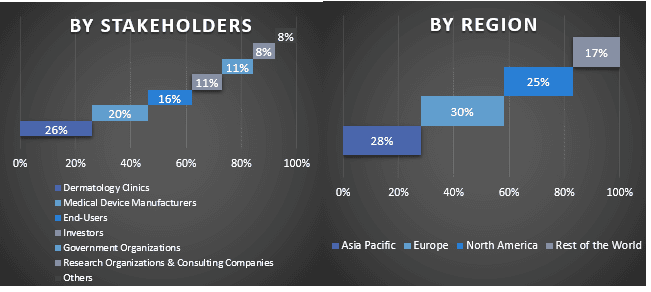
Market Engineering
The data triangulation technique was employed to complete the overall market estimation and to arrive at precise statistical numbers for each segment and sub-segment of the global Botulinum Toxin market. Data was split into several segments & sub-segments post studying various parameters and trends in the areas of the Type, application, end-user and regions in the global Botulinum Toxin market.
The current & future market trends of the global Botulinum Toxin market were pinpointed in the study. Investors can gain strategic insights to base their discretion for investments on the qualitative and quantitative analysis performed in the study. Current and future market trends determined the overall attractiveness of the market at a regional level, providing a platform for the industrial participant to exploit the untapped market to benefit from a first-mover advantage. Other quantitative goals of the studies include:
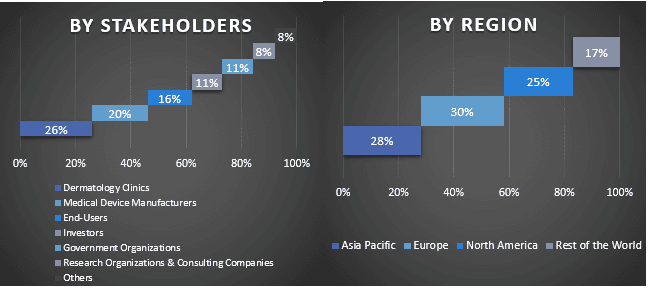
Q1: What is the Botulinum Toxin market's current market size and growth potential?
Q2: What are the driving factors for the growth of the Botulinum Toxin market?
Q3: Which segment has the largest share of the Botulinum Toxin market by type?
Q4: What are the emerging technologies and trends in the Botulinum Toxin market?
Q5: Which region will dominate the Botulinum Toxin market?
Customers who bought this item also bought